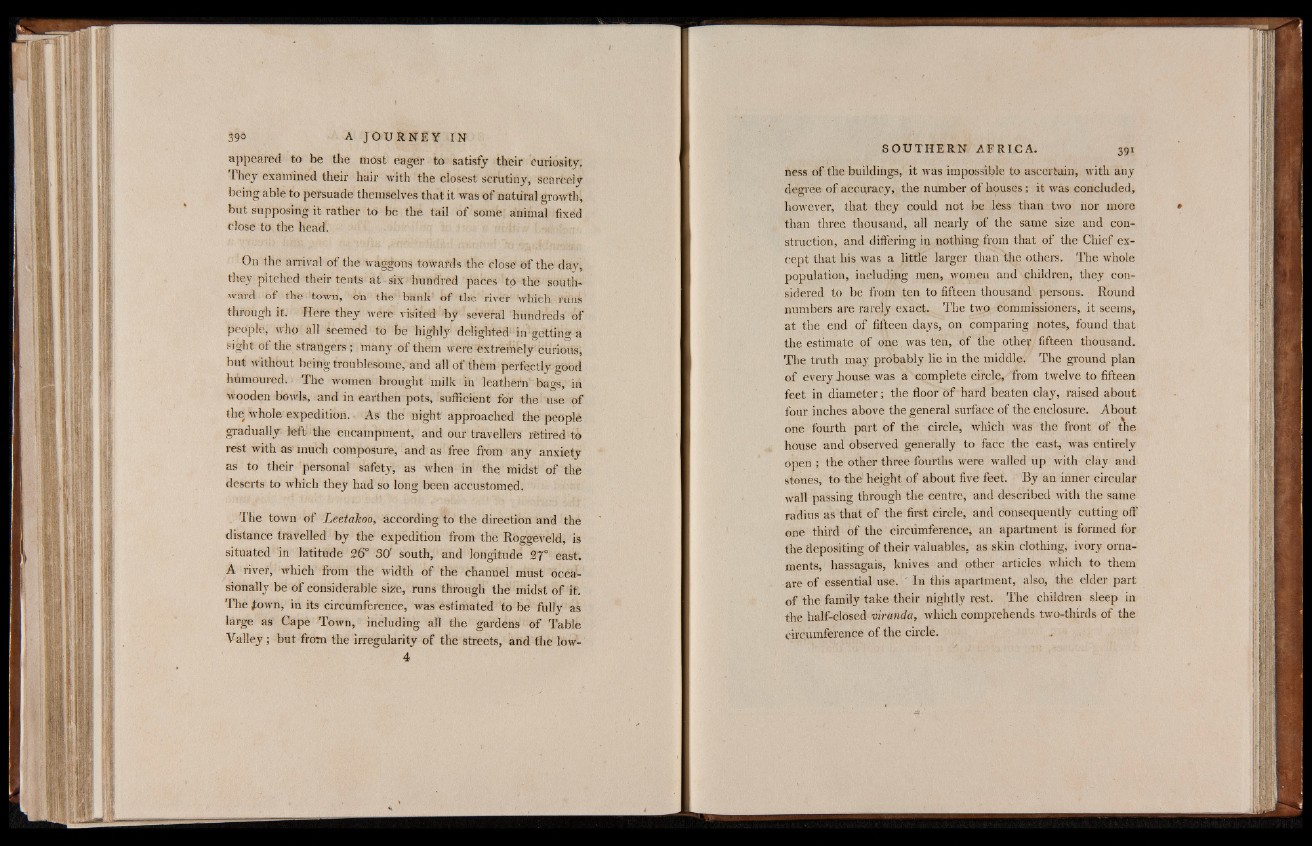
appeared to be the most eager to satisfy their curiosity,
lhey examined their hair with the closest scrutiny, scarcely
being able to persuade themselves that it was of natural growth,
but supposing it rather to be the tail of some animal fixed
close to the head.
On the arrival of the waggons towards the close of the dav,
they pitched their tents at six hundred paces to the southward
of the town, on the bank of the river which runs
through it. Here they were visited by several hundreds of
people, who all seemed to be highly delighted in-getting a
sight of the strangers; many of them were extremely curious,
but without being troublesome, and all of them perfectly good
humoured. The women brought milk in leathern bags, in
wooden bowls, -and in earthen pots, sufficient for the use of
thq whole expedition. As the night approached the people
gradually left the encampment, and our travellers retired to
rest with as much composure, and as free from any anxiety
as to their personal safety, as when in the midst of the
deserts to which thejr had so long been accustomed.
. The town of Leetakoo, according to the direction and the
distance travelled by the expedition from the Roggeveld, is
situated in latitude 26° 30' so u th lan d longitude 27° east.
A river, which from the width of the channel must occasionally
be of considerable size, runs through the midst of it.
The ¿own, in its circumference, was estimated to be fully as
large as Cape Town, including all the gardens of Table
Valley; but from the irregularity of the streets, and the low-'
4
ness of the buildings, it was impossible to ascertain, with any
degree of accuracy, the number of bouses; it was concluded,
however, that they could not be less than two nor more
than three thousand, all nearly of the same size and construction,
and differing in nothing from that of the Chief except
that his was a little larger than the others. The whole
population, including men, women and children, they considered
to be from ten to fifteen thousand persons. Round
numbers are rarely exact. The two commissioners, it seems,
at the end of fifteen days, on comparing notes, found that
the estimate of one. was ten, of the other fifteen thousand.
The truth may probably lie in the middle. The ground plan
of every .house was a complete circle, from twelve to fifteen
feet in diameter; the floor of hard beaten clay, raised about
four inches above the general surface of the enclosure. About
one fourth part of the circle, which was the front of the
house and observed generally to face the east, was entirely
open ; the other three fourths were walled up with clay and
stones, to the height of about five feet. By an inner circular
wall passing through the centre, and described with the same
radius as that of the first circle, and consequently cutting off
one third of the circumference, an apartment is formed for
the depositing of their valuables, as skin clothing, ivory ornaments,
hassagais, knives and other articles which to them
are of essential use. ' In this apartment, also, the elder part
of the family take their nightly rest. The children sleep in
the half-closed viranda, which comprehends two-thirds of the
circumference of the circle.